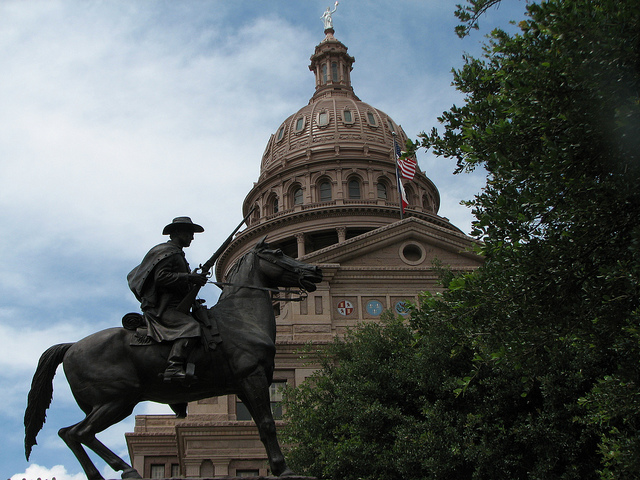
The Texas Legislative Budget Board (LBB), the Lone Star State’s equivalent of the Congressional Budget Office, released its biennial spending cap recommendation this month, calling for spending to increase by no more than 11.68 percent for the 2016-17 biennium. Although the recommendation is slightly less than a one percent increase from the current cap, it poses a threat to the economic well-being of the Lone Star State.
While the Texas constitution instructs the LBB to set spending limits based on projected economic growth, the board chooses how they evaluate growth. Currently, the cap is based on estimated growth in personal income over the next two years and only applies to 40 percent of the budget.
The first glaring flaw with the LBB’s figure is that the premise for the spending cap is weak. As with all projections, a certain level of ambiguity is involved. Basing a budget on expected income that is not yet tangible is hazardous because it incentivizes superfluous spending. A much more appropriate metric of fiscal sustainability is limiting state spending to the rate of growth in population plus inflation.
Since the 2004-2005 budget, total spending has increased 13.4 percent beyond inflation and population growth— with a whopping $12 billion price tag. As a result, a family of four can expect to pay $1,800 more in taxes this year.
Reining in spending to mirror population growth and inflation is the fiscally responsible thing to do when it comes to protecting Texas taxpayers.
By law, the lieutenant governor, comptroller, and speaker of the house had 10 days to either accept the board’s recommendation or to enact another measure of growth. However, now that this period has lapsed, it appears that the lieutenant governor and company were nothing but a rubber stamp for this flawed cap.
Americans for Tax Reform, as member of the Texas Conservative Budget Coalition, strongly recommends state legislators enact a new and stronger cap when they return to Austin for the 2015 legislative session, capping spending for the new biennium at 6.5 percent for the entire state budget. This cap is based on the rate of population growth plus inflation over the last biennium. Limiting the budget to this figure means that total 2016-17 appropriations would not surpass $217.1 billion.
Even though the Lone Star State is relatively well governed, Texas still has room for improvement. In addition to implementing a true budget cap that will put state spending on a sustainable trajectory, eliminating the margins tax will put the state back on track to reaching its full economic potential.
It’s not just important for Texas taxpayers that lawmakers get it right when it comes to enacting a true spending cap and pro-growth tax reform, it’s also important to the nation.
As Vance Ginn, Economist at the Texas Public Policy Foundation’s Center for Fiscal Policy has noted, “excluding the 1.1 million jobs added in Texas since the last recession started in December 2007, the rest of the U.S. employs about 350,000 fewer people than its pre-recession level.” President Obama owes Texas a big thank you.
Texas lawmakers will have a lot on their plate during the 2015 session, but enacting a fiscally responsible spending cap and getting rid of the margin tax should be at the top of the to-do list.

